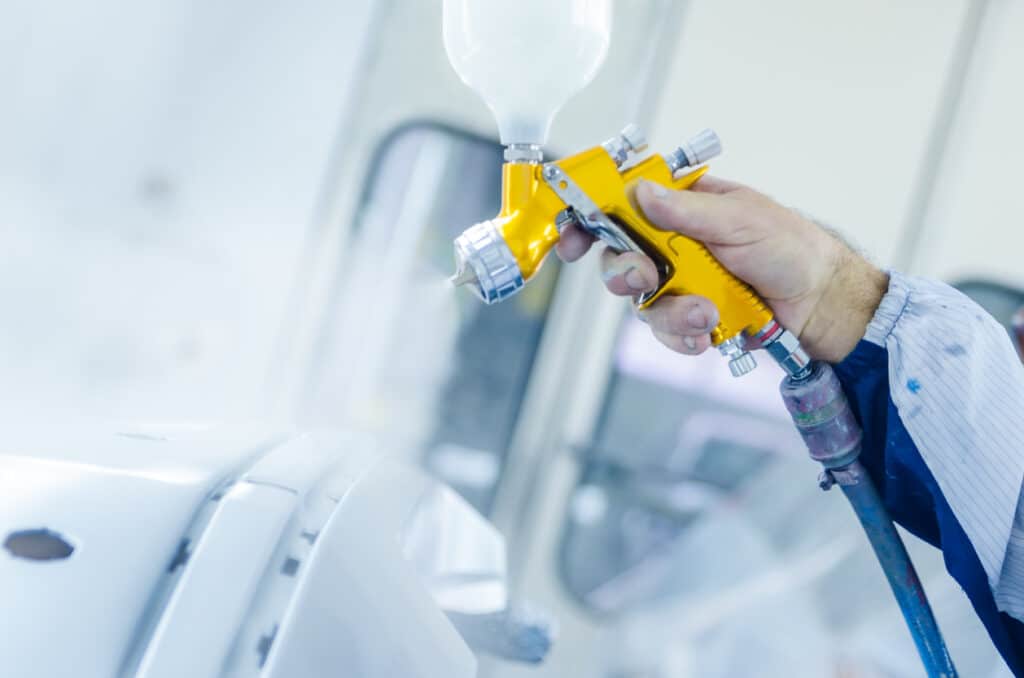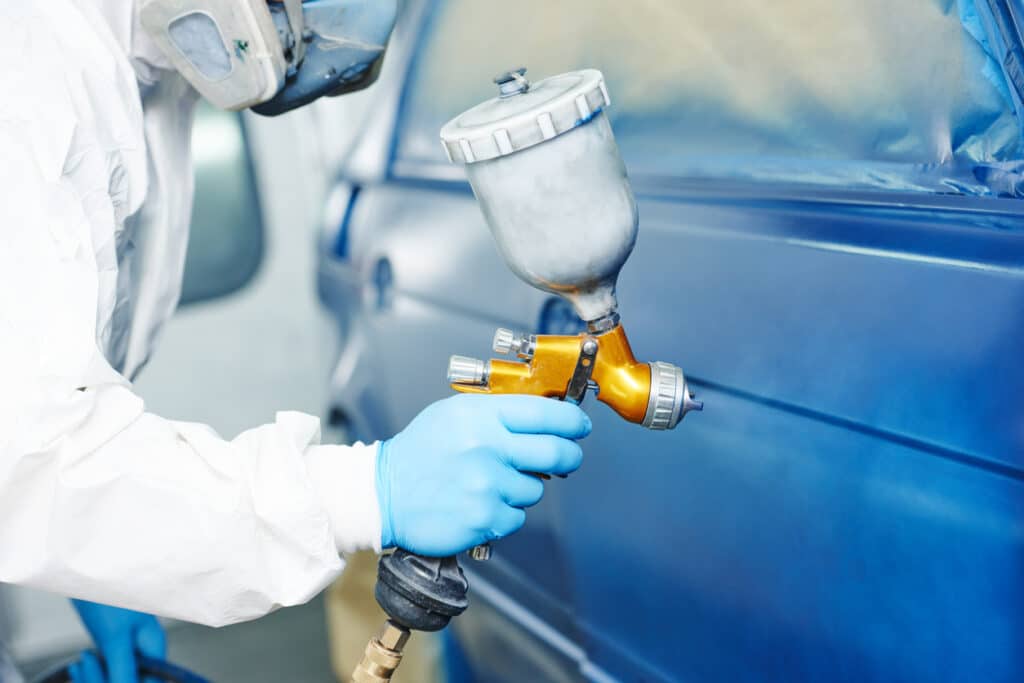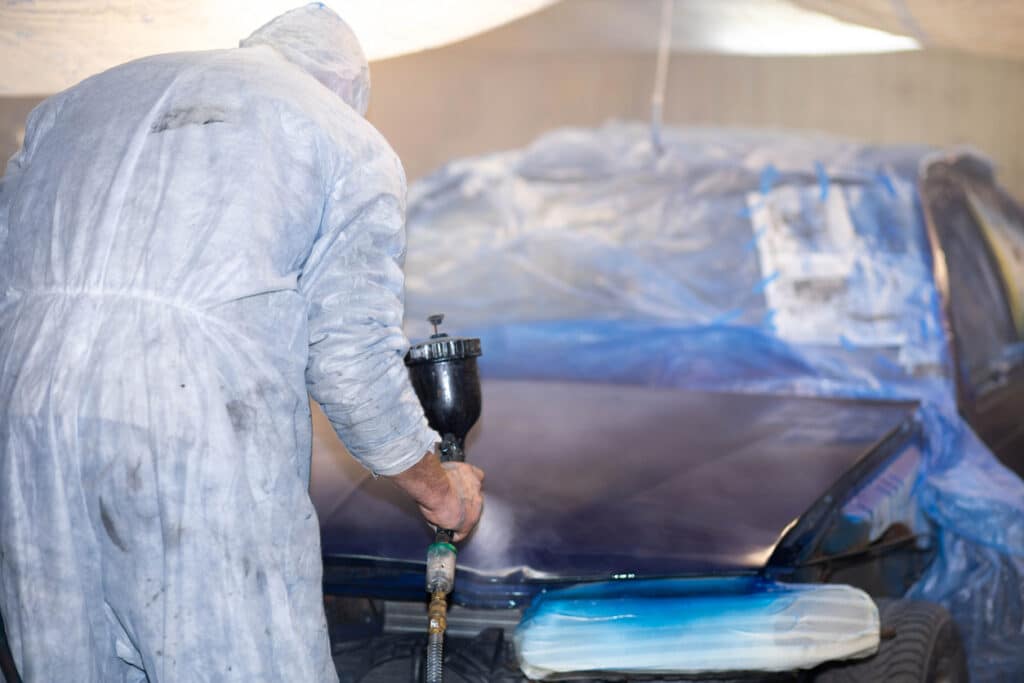What is Metamerism in Automotive Painting? Causes, and How to Avoid
Paint defects and colour-matching blunders in the automotive industry can significantly reduce the quality of a finished repair job and result in customers taking their business elsewhere. One of the most common issues that arise with automotive painting is metamerism. But what does this term mean and how can this affect the finish of your paint job?
Here, we’ll be exploring how metamerism can impact your ability to accurately colour-match automotive paint and some of the typical causes of metamerism. We’ll also provide our top suggestions to help prevent and remedy paint defects caused by metamerism in your body shop.
What is Metamerism?
Metamerism is a phenomenon where a particular colour may appear similar to another colour under specific conditions, such as under daylight, but seem entirely different under a different set of conditions. For instance, two colours that look identical in daylight may appear dissimilar when viewed under an artificial light.
Metamerism may seem complex, but the concept is simply down to human colour perception. This relies on four core elements: light, the object, the observer, and interpretation. The light source emits the wavelengths of light which create the colours we see. The object being observed also plays a crucial role in colour perception, since it reflects or absorbs certain wavelengths of light, altering the colour we perceive. The observer’s eyes and brain then work together to interpret the information received from the light source and the object, which can change our colour perception. Finally, the interpretation of colour can be influenced by various external factors such as personal experience and context, meaning that we can see the colour differently based on how each individual interprets it.
Types of Metamerism

It’s helpful to understand that there are three different types of metamerism that can all impact an automotive paint job or repair.
Below is each type and its definition:
- Illuminant Metamerism: This occurs when two samples appear to match well under one light source but show intense mismatching under another.
- Observer Metamerism: Observer metameric failure, sometimes referred to as observer metamerism, can occur because of differences in colour vision between observers. For example, if one individual has poorer colour vision than another, then they’re likely to view the same colour differently.
- Geometric Metamerism: This is when two colours appear the same from one angle but different from another. Shadows and light can also play a part in geometric metamerism because these can cause colours to appear different depending on which perspective you have.
Causes of Metamerism in Automotive Painting
Mismatching of automotive paint can be due to a few different factors. From different lighting causing illuminant metamerism to varying human perceptions leading to observer metamerism, it’s not always easy to achieve an exact match.
When it comes to automotive painting, lighting is one of the most important factors that can lead to metamerism. If the lighting in your automotive repair shop is poor quality or not bright enough, it can result in colour metamerism because you may not be seeing the paint properly before application.
Human colour perception is also a common cause of metamerism. We all perceive colours differently and our colour vision can cause certain colours to look the same when this isn’t necessarily the case. So if an automotive repair professional has poorer colour vision, they may be more likely to have their automotive paint job affected by metamerism.

How to Avoid Metamerism while Painting Cars
Knowing how to avoid metamerism in automotive painting can reduce the number of paint defects you encounter and keep your customers consistently happy with the quality of work. It can also reduce the need for reworking or fixing paint-matching blunders.
When the actual colour shade of the vehicle’s surface is unknown, metamerism can only be avoided with the use of colourimetric devices. Using paint-matching software or tools is one the best ways to prevent issues from metamerism because the specialised equipment can simply measure the spectral characteristics of the light source and adjust the paint colour accordingly. The software will then identify the shade of the paint, allowing you to colour-match as accurately as possible.
For known shades where the mixing formula is readily available, the shade should be checked under different light sources before being applied to the vehicle’s surface. In addition, tinting should only be carried out using mixing bases that are part of the mixing formula or are specified on the colour adjustment chart. This will ensure your match is close or exact and isn’t affected by factors such as light or human perception.
One of the main techniques for avoiding metamerism is to ensure your body shop has high-quality lighting. A dim or overly bright light can distort our perception of colours, so body shops should invest in good quality lighting that shows different colour shades as best as possible. Lighting should remain in the same place at the same brightness level throughout the mixing and application process because this will give you the best chance of accurately viewing the colour of the vehicle against the fresh paint.
It’s also equally important to check the original colour against the mixed-up colour under a variety of lighting. Viewing it from all angles under natural light and studio lighting can help ensure the match is correct and accurate before beginning the spraying process.
Using high quality paint and preparing the car’s surface properly can also help ensure you’re left with the best possible finish and reduce the risk of metamerism. Using a different type of paint to the one that was originally applied might look similar during application, for example, but appear dissimilar once dried. To help avoid this issue, apply a small amount of the new paint to the area and allow it to dry fully. You can then view it and assess how well the paints match before continuing.
How to Fix Paint Defects Caused by Metamerism: Fixing Mismatched Car Paint Colours

Paint defects caused by metamerism can be corrected by blending the paints together to remove any harsh lines and reduce the severity of the differences. To do this, we recommend applying a layer of the original paint colour to the defect and then blending it with the surrounding area. This technique is commonly used by professionals in the automotive industry where colour matching is crucial to ensure a consistent appearance of the vehicle, even when the wrong colour has been applied initially.
However, for instances of more severe mismatching, the vehicle’s surface may need to be resprayed entirely. If you discover that the mismatching can’t be blended easily or the affected area covers a large area of one or more car panels, it’s usually best to sand down the paint layers and start again from scratch. This can be the best way to ensure that the mismatched car paint is completely fixed and that the paint job is the best it can be.
Whether you’re repairing the paint on a car door or bonnet, body shop professionals should use high-quality automotive tapes to mask off the adjacent areas of the car body before painting. This ensures that the paint will only be applied to the intended area, resulting in a clean and professional finish.
How you deal with metamerism in your body shop can be the difference between a good and bad automotive paint job. By understanding and addressing the impact metamerism can have, body shops can avoid paint defects caused by this phenomenon and instead focus on delivering high-quality automotive paint jobs that meet the expectations of their customers.
To discover our excellent range of automotive tapes suitable for a wide array of uses in the automotive repair industry, check out JTAPE’s extensive product list.


